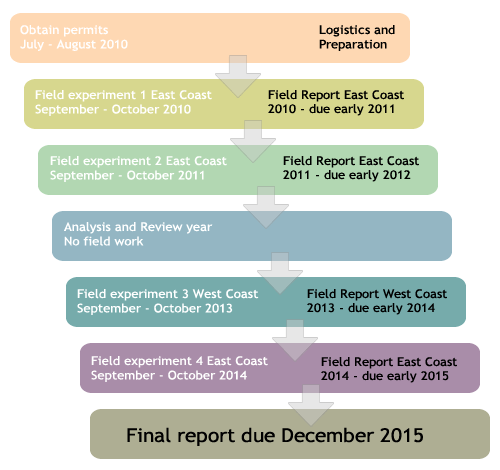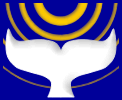The BRAHSS Project
OverviewThe BRAHSS study is one the largest and most comprehensive studies on the effects of noise on whales ever undertaken. This project aims to provide information that will reduce the uncertainty in evaluating impacts of seismic surveys on humpback whales leading to management and mitigation measures that allow surveys to be conducted efficiently with minimum impact on the whale. It will also assess the effectiveness of ramp-up as a mitigation measure, and the potential to improve
The broad objectives are:
- To determine the response of humpback whales to a typical commercial seismic survey in terms of the variables affecting the response, such as the received sound level, relative movements of
seismic array and whales and distance between them, behavioural state and social category of the whales, and environmental variables. - To determine the response of humpback whales to soft start or ramp-up and its components, to assess the effectiveness of ramp-up as a mitigating measure in seismic surveys and the potential for improving the effectiveness.
- To relate these responses to the range of normal behaviour and the response of the whales to other stimuli, such as passing ships, using the substantial body of knowledge that exists from previous research for the populations studied. Knowledge of the function of the behaviour, the population dynamics and the biology of the whales will allow us to infer and model effects on life functions.
![]() Click here to read the original project proposal.
Click here to read the original project proposal.
Funding
Funding is being provided by the by the Joint Industry Programme on E&P Sound and Marine Life (JIP) and by the United States Bureau of Ocean Energy Management (BOEM). This is part of the JIP broad investigation
Experimental Program
There will be four experiments in September and October from 2010 to 2014.
- 2010: East coast using a 20
cui air gun. - 2011: East coast using first four air guns in ramp-up.
- 2012: Analysis and review year.
- 2013: West coast: aspects of the east coast experiments.
- 2014: East coast: fully operational commercial array with ramp-up.

